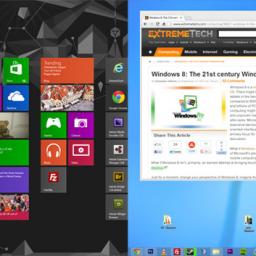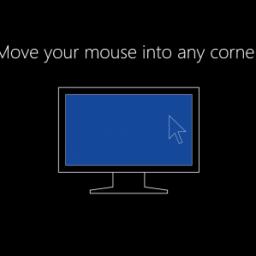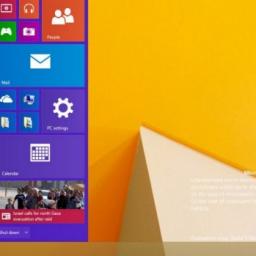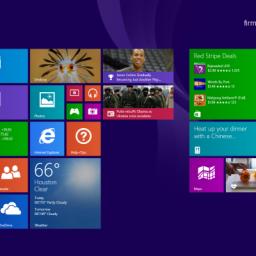
As Satya Nadella's axe continues to fall at Microsoft,
the corporation's Silicon Valley research lab has been the next to succumb to the severe round of staff reductions ongoing this year.
In a move that appears to reflect a new level of urgency to Nadella's consolidation plans, the Redmond giant has closed one of its flagship engineering facilities and released dozens of world-class scientists into the job market - and the welcoming arms of its competitors. The Mountain View site reportedly employed a team of 75 that focused exploring new applications for distributed computing - the fundamental concept behind the cloud - in areas such as natural language search, data privacy and network security.
But although the lab itself is no longer operational, Microsoft is still clinging to its Silicon Valley research investment. Projects that were ongoing at the time of the termination have been transferred to other research facilitates along with key members of the original team, which indicates that business will continue more or less as usual at those sites for the foreseeable future.
While the cuts were met with stockholder approval, there's speculation Nadella's staff reductions are a strategy of short term gains that will jeopardize the corporation's long term prospects.

Windows Phone; Windows 7, 8, 9; Windows RT; Windows CE; and not to mention all the different variations of Windows boxed OSes (Pro, Basic, Home, and so on): there have been a lot of different products that bear the name Windows, and someone has probably decided it's time to simplify.
The idea would be that, in the mind of the consumer, Windows is just Windows, and that all of these different names and flavors are just confusing ("Why is it called Windows Phone if it can't run my Windows programs?"). Getting rid of all that complexity and returning to the old way - where Windows is synonymous with personal computing - would certainly be a coup for Microsoft. But just as it shot itself in the foot with Windows RT, consolidating on just "Windows" could be fiscal suicide if Microsoft's various operating systems don't indeed come together as one harmonious platform.
The folks at ExtremeTech have noticed a shift in nomenclature and marketing focus these days, as several products have simply discussed
Windows, with no emphasis on anything other than that single word. The challenge here is that what marketing wants can't be delivered by the technical teams behind all those different versions of Windows operating systems, as they are not just different codebases, but extremely different code bases.
With rumors of Windows debuting Windows 9 at the end of September, pundits everywhere are asking how Microsoft could possibly dig themselves out of the hole they dug with the troubled 'feature set' of Windows 8.
According to Ed Bott of ZDNet, it can be done.We already know a little about what will be in what will probably end up being called Windows 9. Microsoft has officially announced the return of the Start menu, with a new, modern design, as well as the ability of mobile (Metro-style) apps to run in windows on the Windows desktop. More recent rumors suggest that virtual desktops will be added and Windows 8's signature charms menu will vanish. Cortana might even make an appearance.
[A] metaphor for this release might be the crack of a starter's pistol, marking the beginning of a new stage in a very long race. What gets delivered this fall as a preview will be updated in a few months as a final release, which will then be revised and expanded again and again over the next few years as Microsoft's new, faster update cadence continues.
Hey, if this version's good enough maybe I'll stop using Windows 95.
 Prefer Windows 7 to Windows 8
Prefer Windows 7 to Windows 8? Too bad: you're not far away from not having the choice, for some editions. Some wholesalers are already reporting they will no longer be getting Windows 7 Home Premium or Windows 7 Ultimate after October:
Windows 7 Home Premium and Windows 7 Ultimate will be EOL on 10/31/14. Please note: This is ONLY Windows 7 Home Premium and Ultimate editions -- NOT Windows 7 Professional. Windows 7 Professional will still be around for the foreseeable future... No EOL date has been issued on Pro as of yet.
If you have customers that will require Windows 7 Home Premium beyond 10/31/14, please plan ahead. We may purchase Windows 7 Home Premium & Ultimate up until 10/31/14, but once that date has passed, Microsoft will no longer sell the item. At that point - what we have left in-stock is final! Please also remember that downgrading from Windows 8 Core to Windows 7 Home on system builds will no longer be an option after this date, either.
Extended support for Win7 is available until
January, 2020. But given how hard it's been to get people to move to Win8, you can only imagine Microsoft is looking forward to pulling the plug on 7 Pro as well.

The relationship among Microsoft, Intel, and ARM remains so intricate it's keeping analysts busy full time trying to deduce what will happen next.
There's good reason to believe Intel's new Bay Trail chips provide performance and energy consumption that's not quite at ARM levels but that do permit Microsoft to hedge its bets by staying with the Intel chips its software seems to require, and ditch ARM altogether. But on the smartphone side, things aren't as clear and there, Qualcomm's ARM chips remain really the leader for mobile computing and an important part of most vendors' strategies.
When Intel lacked competitive low-power mobile system-on-a-chip, or SoC, products, it made sense for Microsoft to want to hedge its bets. After all, if Intel couldn't or wouldn't deliver, then Microsoft's tablet ambitions would crumble. However, when Intel launched its first low-power SoC for tablets -- known as Clover Trail -- it was actually a pretty decent chip. Graphics performance was terrible, but the general-purpose performance was quite a bit better than the Tegra 3 in the Surface RT. Intel's next-generation product, Bay Trail, was more competitive, offering leadership CPU performance and fairly decent graphics performance. The graphics performance of the Tegra 4 found inside of the Surface 2 was still better than Bay Trail's, but the delta wasn't so large as to make the Intel chip look laughable.
That doesn't necessarily mean happy days for Intel. In fact, ExtremeTech believes Intel forcing its way into mobile computing may destroy Intel from the inside out.Fast forward to the present day, and the market Intel is fighting to enter has changed more rapidly than Chipzilla anticipated. Intel chose to stick with dual-core with Hyper-Threading while the ARM SoCs jumped to quad-core. It chose to keep its modem manufacturing at TSMC, where it has faced repeated, unspecified delays. For all that Intel leads the world in semiconductor manufacturing, its XMM 7160 (that's the company's 4G modem actually shipping in any consumer hardware) is built on 40nm, while Qualcomm's Gobi 9i-35 platform is sitting on 20nm.
Stay tuned.

Windows 8 has been called the single biggest failure of a Windows release ever, and it's no secret that Redmond is scrambling to come up with something that will stem the flood of negative press and coax people off of Windows 7. A
leaked screenshot of the Windows 9 start menu shows a conglomerate of the Windows 7 start menu and the Windows 8 Start Screen. Other improvements include a more cohesive approach to the "Modern interface" to allow users to ignore it.
But is this enough to woo people off of Windows 7 and get them to move to Windows 9?
The
Sword of Damoclese may be well about to drop over at Microsoft today.
Last week, Satya Nadella promised a big shake-up in the way Microsoft does business, corporate-speak for a reorganization many would say is long-overdue.
Today is the day.
Employees at the company's campus in Redmond, Wash., are already bracing for the news. Human resources managers have begun reserving conference rooms for most of Thursday, most likely a sign that they will be used to meet with laid-off employees, a person with knowledge of the plans said. Employees will have an opportunity to question Microsoft's chief executive, Satya Nadella, about the cuts on Friday at a regular town hall meeting that was scheduled before the exact timing of the layoffs was known.
Frank Shaw, a company spokesman, declined to comment.

I admit it; amongst all my Linux computers, I still have one remaining Windows box. Until
Blizzard takes a hint from
Steam, I have to endure the horror of Windows in order to get my weekly
raid fix. Now, being a higher end gaming box and the graphic card being one of those 2 slot varieties, the fans can make a good bit of racket. No problem, I simply moved the system to another room (the cords go through the wall and are still plenty long enough) and viola! Quiet gaming room! All is good, until I finish and want to turn off the system. You see, Windows 7 had this convenient little "Shut Down" button that was easy to get to.
But, last year when I upgraded the system's hardware I (mistakenly) opted to try out the newer version 8 of Windows. Well, Microsoft did a fine job of hiding that shutdown option. It takes no less than 6 clicks and several full screen transitions to get to it using the default UI. When it takes less time to get out of your chair, open the door, walk down a small hallway, open another door, walk over to a humming tower, and depress its power button than it does to do the software equivalent, you know your interface is borked.
But no longer! Microsoft's new
Windows 8.1 Update 1 will re-add that missing "Shut Down" option to its (still) metro-tiley start page. And that is progress!
 As Satya Nadella's axe continues to fall at Microsoft,
As Satya Nadella's axe continues to fall at Microsoft, 



